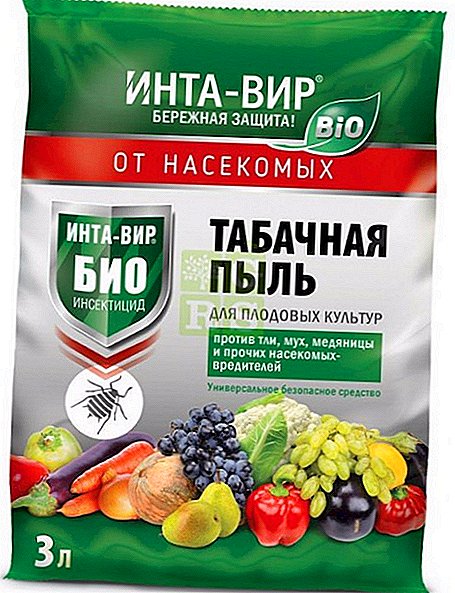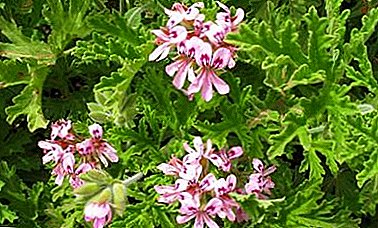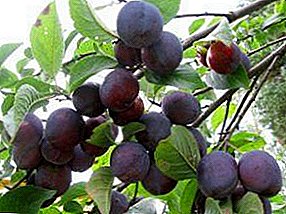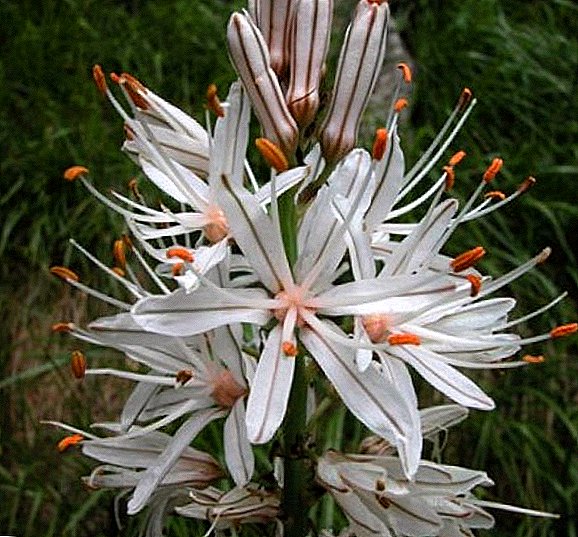
Horse sorrel is a well-known and widespread plant. The Latin name is Rumex confertus.
But not everyone knows that another name of Horse sorrel is Aveluk Armenian grass. In Armenia, it is very loved, and the leaves of this plant are dried and used for culinary purposes.
As a medicinal plant, horse sorrel was known to the ancient Greeks and Romans. Find out if you can eat it, as well as any contraindications to wild herbs.
Curative and beneficial properties of wild Armenian herb and photo
Horse sorrel is used in food and is used as a medicinal plant. already many centuries. It is dried, heat treatment is applied, infusions and decoctions are made, used fresh. As a drug, sorrel is used externally and for internal use. In different places, every nation does it in different ways. In whatever form horse sorrel is used, it is always tasty and healthy. Both tops and roots are used, the properties of which are slightly different from each other.
Further on the photo you will see what sorrel itself looks like, as well as the root and seeds of medicinal herb.




Root
- Preparations from the root act on the body as anchoring and astringent. These properties are caused by a high content of tannins - tannins, which cause the coagulation of proteins, which contributes to the protection of the surface of the intestinal mucosa. As a result, the secretion of gastric juice decreases, bleeding decreases, the protection of the intestinal walls increases. Tanning substances also help with the external use of sorrel preparations for the treatment of ulcers and burns.
- Anthraquinone compounds provide a laxative effect of the roots when using drugs in large doses. Anthraquinones act on the colon as a stimulant and help soften the feces.
- The leucoanthocyanidins and catechins, which are among the many biological compounds of sorrel, have choleretic, antioxidant and hepatoprotective effects.
- It is believed that due to the high content of leucoanthocyanidins and catechins, preparations from sorrel roots have antitumor properties.
- Biologically active substances of both root and seed cause anti-inflammatory, antimicrobial, antispasmodic, hypotensive, diuretic, expectorant, hemostatic, and sedative effects on the human body.
- Liquid extracts from horse sorrel reduce high blood pressure in hypertensive disease of the first and second degree.
- A decoction of sorrel root may be useful to alleviate the symptoms of alcohol intoxication. After taking it, you feel and feel better, a headache disappears, tachycardia and thirst disappear, blood pressure decreases. Improved appetite and sleep.
- In Tibet, oxalic root juice treats skin diseases.
- Brazilian folk healers use the decoction of the roots of sorrel externally for inflammation of the lymph nodes and inwards to relieve heat, cleanse the body, against scurvy and as a tonic.
- Hindus use sorrel root pain to relieve toothache, and when gums are inflamed, they use a powder from the root to clean the teeth.
- Thais recommend the use of sorrel steam baths for skin ulcers and sore eyes.
- Slovak traditional healers recommend drinking a decoction of horse sorrel root with intrauterine diseases and various bleeding that occur in the lungs, stomach, intestines.
Seeds
- Fruits have the same properties as the roots, contain a large number of tanning substances, catechins, flavonoids (quercetin, rutin). They are characterized by astringent and antioxidant properties.
- Seed preparations are used for dyspepsia and dysentery in complex therapy, some traditional healers treat them to the diseases of the nails, herpes, scabies and avitaminosis.
- Broths and infusions of seeds soothe and produce a tonic effect.
Chemical composition
 The chemical composition of the plant is very diverse. These are macro and microelements, organic acids, various oils and resins, nitrogenous substances, antimicrobial substances, sugars and tanning substances. That is why horse sorrel can be used to treat various diseases of internal organs and external diseases.
The chemical composition of the plant is very diverse. These are macro and microelements, organic acids, various oils and resins, nitrogenous substances, antimicrobial substances, sugars and tanning substances. That is why horse sorrel can be used to treat various diseases of internal organs and external diseases.
Vershok contains:
- anthraquinones;
- flavonoids up to 8.15%, including rutin up to 1.4%;
- caffeic acid.
Stems contain:
- fiber 27%;
- nitrogen-containing substances, including proteins up to 12.7%, fats up to 2%;
- iron up to 0.2%;
- tanning substances from 2 to 7%;
- rutin;
- a number of vitamins C, K, PP, carotene.
Flowers have in their composition:
- tanning substances up to 8.25%;
- vitamin C;
- routine up to 2.5%.
The composition of the grains include:
- tanning substances from 6 to 7.36%;
- essential oil to 0.05%;
- calcium oxalate to 1.2%;
- anthracene, catechins, flavonoids up to 1.6%;
- anthraquinones from 1.08 to 1.22%;
- vitamin C, K;
- carotene.
Plant roots contain:
- vitamin K;
- tanning agents of the pyrocatechin group up to 16%;
- ascorbic acid;
- flavonoids;
- essential oils up to 0.2%;
- organic acids;
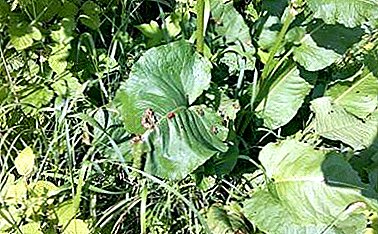 resins;
resins;- anthraquinone derivatives (hrykyufanovaya acid, emodin, aloemodin, fision).
The chemical composition of the roots includes:
- macronutrients in mg / g (calcium - 37.10, potassium 4.70, magnesium - 4.30, iron - 0.70);
- trace elements in µg / g (barium - 22.30, strontium - 5.20, boron - 3.50, selenium - 1.25, copper - 0.64, nickel - 0.60, aluminum - 0.42, zinc - 0.39, vanadium - 0.26, manganese - 0.19, cobalt - 0.16, iodine - 0.09, chromium - 0.07, lead - 0.05).
Calcium oxalate is found in large quantities in all parts of the plant.
Indications for use: what is the use for a person?
They can also be used as prophylactic agents. An important factor is the dosage of the medicinal composition, as in small and large doses, preparations of sorrel act in different directions. The following diseases can be treated effectively:
- stomach and intestines, such as atonic constipation, enteritis and colitis;
- hemorrhoids, rectal fissures;
- bleeding of various etymologies;
- helminths, salmonellosis in children;
- hepatitis, cholecystitis and cholangitis;
- avitaminosis prevention;
- diseases of the oral cavity (sore throat, stomatitis, etc.);
- allergies;
- furunculosis, ulcers and burns;
- rheumatism.
Contraindications and side effects, possible harm
 Side effect of drugs may be caused by oxalic acid., in a large amount contained in the plant. Oxalic acid reacting with calcium, can form in the human body oxalic acid calcium - a salt that is poorly soluble in water. It can fall in the kidneys in the form of sand or sediment and promote the formation of oxalate stones.
Side effect of drugs may be caused by oxalic acid., in a large amount contained in the plant. Oxalic acid reacting with calcium, can form in the human body oxalic acid calcium - a salt that is poorly soluble in water. It can fall in the kidneys in the form of sand or sediment and promote the formation of oxalate stones.
Horse sorrel and drugs from it are contraindicated in gout, salt metabolism disorders, kidney diseases and susceptibility to kidney stones, as well as during pregnancy and breastfeeding. This is due to altered metabolism in the above patients and pregnant women.
Can I eat and use in cooking?
Horse sorrel is used for medicinal purposes and for cooking. In Armenia, the leaves, along with the stems, are harvested, dried, and only then used for cooking. During drying, the bitterness characteristic of fresh leaves disappears, and they become palatable. Dried leaves are used for cooking.:
- soups;
- pancakes;
- salads;
- as a filling for pies and pies;
- a snack;
- omelette
The French add sorrel to fricassee and stew. In England, braised sorrel is consumed with meat or fish. Italians prepare mousses from horse sorrel.
In Russia, they cook the first dishes and make a filling for pies. The most popular dish on the territory of the former USSR is borscht made from fresh leaves of horse sorrel. Borsch is less sour than regular sorrel, and is suitable for dietary nutrition.
Young sour leaves of sorrel freeze, dry or preserve for the winter. At the same time they retain all the useful properties. Canned leaves can be salted and pickled.
Collecting and harvesting
Collect and harvest sorrel, preferably until mid-summer. In the second half of summer, an excessive amount of oxalic acid accumulates in the leaves of the plant, the action of which can disrupt the body's mineral metabolism. Assistant in the neutralization of the harmful effects of acid are dairy products.
Treatment: from what helps?
Diarrhea
 With diarrhea, decoction of the plant is used as an independent medicine. Accept as freshly prepared, and at short storage in a dark cool place. It is important to observe the dosage and use the following recommendations:
With diarrhea, decoction of the plant is used as an independent medicine. Accept as freshly prepared, and at short storage in a dark cool place. It is important to observe the dosage and use the following recommendations:
- Chop the dried root, pour one teaspoon with a liter of water, boil for ten minutes, strain and cool. Drink sixty milliliters in the morning, afternoon, and evening.
- Two tablespoons of dried seeds pour two cups of water, boil for ten minutes. After cooling and filtering, adults drink, divided into three times. Children are given in the morning, afternoon and evening for 30-50 milliliters.
Hemorrhoids
For the treatment of hemorrhoids use decoction and infusion, preferably in complex therapy. Use internally and for enema. Preparations are prepared and applied as follows.:
- A tablespoon of dried raw materials pour two hundred milliliters of water, simmer for 15 minutes, let stand ten, squeeze. Take a tablespoon in the morning, afternoon and evening. It is recommended for colitis, enterocolitis, rectal fissures. Can be used for setting enemas.
- Infusion of alcohol is made from 5 grams of dry root and 120 milliliters of alcohol. Composition put in a dark place for two weeks. Strain and take 20 drops before meals in the morning at lunch and in the evening. For setting enemas do not apply!
Dysentery
When treating dysentery, horse sorrel is desirable to use in complex therapy. The most effective freshly prepared decoction:
A teaspoon of dried root pour five cups of water, boil for 15 minutes, filter. Drink three times a day for one-third of a glass.
To strengthen hair
Broth is used for greasy and brittle hair., with split ends and to eliminate dandruff. The cooled broth is heated and rinsed with clean hair using one of two recipes:
- Boil 12.5 grams of dried roots with two liters of water. Insist to cool. Rinse hair after washing.
- Four tablespoons of dried horse sorrel leaves and dried burdock root should be poured with a liter of water and boiled for 30 minutes, let it brew until it cools. Rinse washed hair.
Boils
For the treatment of furunculosis, an ointment based on fats is used; it is used by simple application to the skin and in the form of dressings. Often in the treatment of furunculosis, blood purification is necessary. The ointment is made and applied very simply:
The powder of the root mixed with animal fat, petroleum jelly or vegetable oil. Can be applied to boils and sores on the skin.
Bleeding
For pulmonary, uterine, gastrointestinal bleeding, take an infusion. It can also be used for fissures of the colon. Here is a simple recipe for preparing and receiving tinctures.:
Pour 5 grams of dried root in 120 milliliters of vodka, leave for two weeks, strain. Drink three times a day twenty drops before meals.
Rheumatism
 Infusions of sorrel treat rheumatism, taking them internally, as a rubbing and in the form of compresses. The process of manufacture and treatment of tinctures for indoor and outdoor use is different:
Infusions of sorrel treat rheumatism, taking them internally, as a rubbing and in the form of compresses. The process of manufacture and treatment of tinctures for indoor and outdoor use is different:
- Twenty grams of horse sorrel roots insist in 100 milliliters of vodka for ten days, filtered. Drink 20 drops in the morning, afternoon and evening before meals.
- One fresh root is cleaned, cut into small pieces and insisted in 0.5 l of vodka for 20 days. Rubbing sore joints twice a day, can be used as compresses.
Blood purification
When the body accumulates a lot of toxins and toxins, the body can not function properly. This leads to the emergence and manifestation of various diseases, in particular, pulmonary, hepatic, renal, cardiovascular and allergies.
We clean the blood as follows:
- Five tablespoons of the root pour five cups of hot water.
- Boil for 10 minutes on low heat, leave for one hour (covered with a towel).
- Before use, strain and take 50 ml 15 minutes before meals, four times a day.
Horse sorrel is very useful due to its chemical composition. The plant contains tanning substances, organic acids, essential oils, flavonoids and vitamins. According to traditional medicine recipes, infusions, decoctions and ointments are made of it. Prepare delicious and healthy dishes. You should not forget about contraindications, especially for pregnant women and women during breastfeeding.


 resins;
resins;